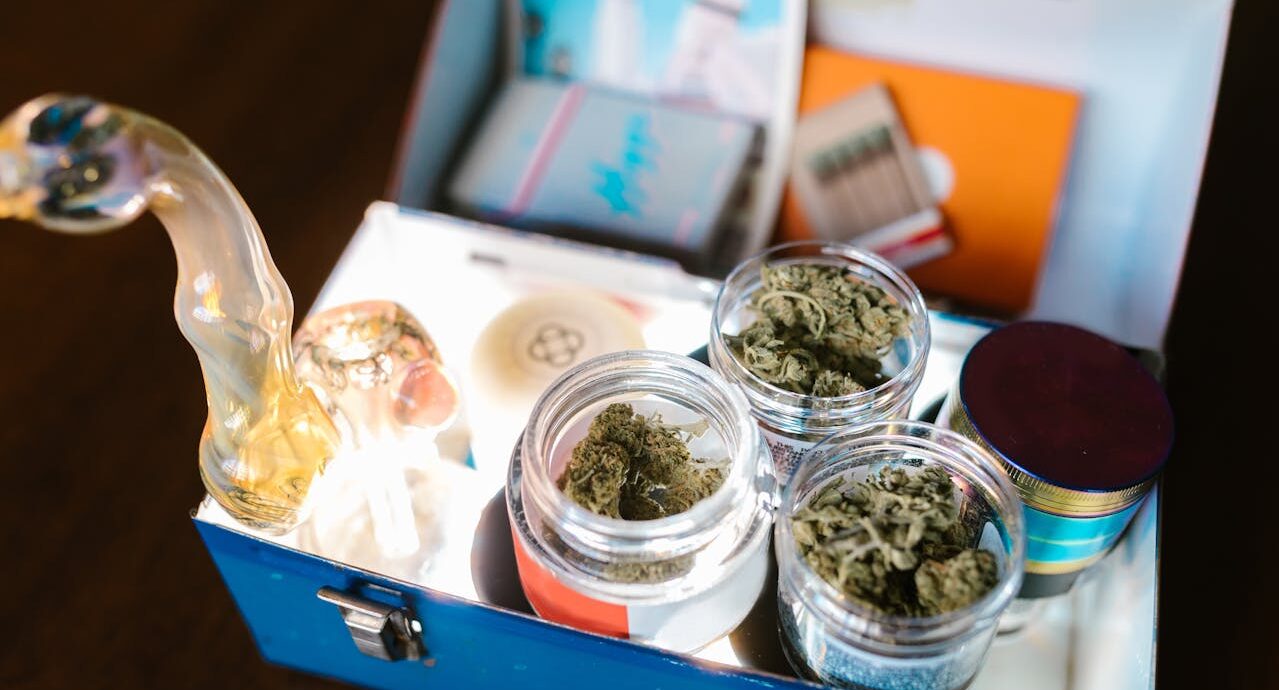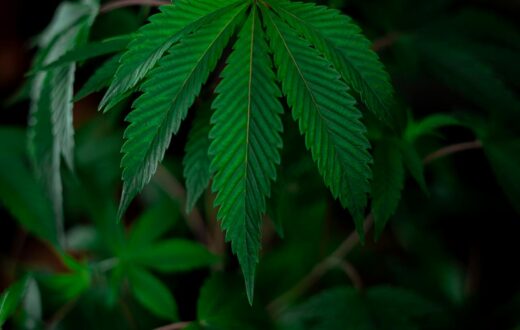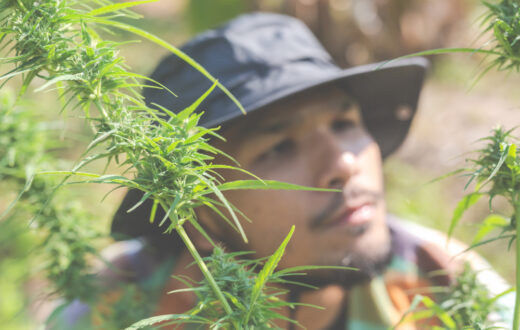Introduction to Blueberry Strain
The Blueberry strain is a renowned cannabis variety with a rich genetic lineage, originally developed in the 1970s. It is primarily an Indica-dominant hybrid, known for its vibrant hues and sweet, fruity aroma, reminiscent of fresh blueberries. The strain was created by crossing several classic strains, including Afghani, Thai, and Purple Thai, which contributes to its unique flavor profile and broad appeal.
One of the most compelling attributes of Blueberry strain is its taste. Upon inhalation, users often enjoy a sweet and fruity blast, accompanied by earthy undertones that provide a well-rounded smoking experience. The aroma is equally enticing, characterized by mixed notes of ripe berries, which makes it a popular choice among cannabis connoisseurs. The flavor and scent have led this strain to win several awards over the years, solidifying its reputation within the cannabis community.
Beyond its sensory qualities, the Blueberry strain is favored by growers for its impressive yields and resilience. When cultivated properly, the plant can produce a substantial amount of buds that are dense and covered in shimmering trichomes. This strain not only flourishes indoors under controlled conditions but also adapts well to outdoor environments. Its growth characteristics allow cultivators to learn how to grow Blueberry strain plants with relative ease, making it an ideal choice for both novice and experienced growers.
The Blueberry strain offers a well-balanced high that can provide both uplifting euphoria and a soothing body relaxation, appealing to recreational users looking for enjoyment as well as to medical patients seeking relief from various ailments. Its hybrid nature allows it to offer a versatile experience, which is yet another reason for its enduring popularity among cannabis cultivators and consumers alike.
Choosing the Right Seeds
When learning how to grow blueberry strain plant effectively, the initial step lies in selecting the right seeds. Blueberry strains are renowned for their unique flavor profiles and robust effects, thus creating a need for careful seed selection based on the grower’s preferences and cultivation experience. There are two primary categories of blueberry strain seeds: photoperiod and autoflowering varieties.
Photoperiod seeds require specific light schedules to trigger the flowering phase. Typically, these seeds flourish best with 18 hours of light during the vegetative stage and 12 hours of light once flowering is desired. This type of seed is suitable for growers who have the capacity to manage light cycles and are looking for larger yields. In contrast, autoflowering seeds transition to the flowering stage automatically after a few weeks, regardless of light conditions. These seeds are ideal for beginners, or those seeking a quicker turnaround between harvests.
To ensure the seeds you choose represent quality genetics, it’s important to source them from reputable seed banks. Established companies often provide detailed descriptions of their seeds, including growth characteristics and expected yields. Notable seed banks include Seedman, ILoveGrowingMarijuana, and Herbies Seeds, which offer a wide variety of options. Additionally, seeking out breeders that share their testing results can also help in gauging the genetics of a strain.
Furthermore, understanding the specific characteristics of different blueberry strains can aid in making an informed choice. Aspects such as plant height, flowering time, and resistance to diseases or pests all contribute to a successful growing experience. By selecting quality seeds based on these criteria, growers will be better positioned to cultivate their desired blueberry strain successfully.
The Ideal Growing Environment
Creating the optimal environment for growing blueberry strain plants is crucial for ensuring healthy development and maximizing yield. Whether cultivating indoors or outdoors, several environmental factors need careful consideration.
Temperature plays a significant role in the growth of blueberry strain plants. Ideally, these plants thrive in a temperature range of 70°F to 80°F (21°C to 27°C) during the day, while nighttime temperatures should drop to around 60°F (15°C). If growing indoors, maintaining a stable temperature is essential, as significant fluctuations can stress the plant and hinder growth. Outdoor growers should select a location that avoids extreme heat or cold conditions.
Humidity levels also affect blueberry strain plants, as these plants prefer moderate humidity. An ideal relative humidity level falls between 40% and 60%. Indoor growers may need to invest in a humidifier or dehumidifier to maintain these levels, while outdoor growers should choose shaded or sheltered areas during periods of high humidity to prevent mold and mildew.
Light requirements for blueberry strain plants are paramount; they require at least 12 to 16 hours of light each day for optimum photosynthesis. When growing indoors, using full-spectrum LED grow lights can effectively simulate the natural sunlight needed. If planting outdoors, ensure the location receives ample sunlight throughout the day, preferably in an area that is not shadowed by trees or buildings.
Moreover, the type of soil used is critical for cultivating blueberry strain plants. These plants prefer well-draining, acidic soil with a pH of 4.5 to 6.0. Incorporating organic matter or peat moss can improve soil quality, helping to retain moisture while allowing for aeration. Regularly testing soil pH ensures that it remains within the desired range, promoting healthy root development.
In conclusion, to successfully grow blueberry strain plants, it is essential to provide the right temperature, humidity, light conditions, and suitable soil. By optimizing these environmental factors, growers can enhance the overall health and yield of their plants.
Planting Techniques for Success
To successfully cultivate the blueberry strain plant, proper planting techniques are essential. The foundation of healthy growth begins with choosing the right seeds and implementing effective practices for germination and planting. When considering how to grow blueberry strain plants, it is crucial to focus on planting depth, spacing, and the overall preparation of the growing area.
First, select high-quality blueberry strain seeds, preferably from a reputable source, to ensure viability. Prepare a seed-starting mix, which should be light and well-aerated to promote healthy root development. When planting the seeds, a depth of approximately ¼ to ½ inch is recommended. This depth allows the seeds to receive adequate moisture while minimizing interference with sunlight necessary for germination. Additionally, it is advisable to maintain a consistent temperature of around 70°F to 75°F, as this range is conducive for sprouting.
Spacing is another crucial factor in the successful growth of the blueberry strain plant. Once the seeds have germinated and seedlings emerge, it is important to thin them out to provide adequate space for each plant to grow. Ideally, seedlings should be spaced around 12 to 18 inches apart once they are ready to be transplanted outdoors. This spacing encourages airflow and minimizes competition for nutrients, ultimately promoting vigorous growth and health.
Timing is of utmost importance when planting blueberry strains. The best time to sow seeds indoors is approximately 6 to 8 weeks before the last frost date. Once seedlings have developed a few sets of true leaves, they can be gradually acclimatized to outdoor conditions through a process called hardening off, which involves exposing them to outdoor environments gradually. Proper timing, depth, spacing, and preparation are key aspects of ensuring a successful transition into the vegetative stage and can significantly impact the overall health of the blueberry strain plant.
Nutrient Requirements and Feeding Schedule
The successful cultivation of the blueberry strain plant hinges on understanding its nutrient requirements during various growth stages. Initially, it is essential to provide a balanced mix of macronutrients, including nitrogen (N), phosphorus (P), and potassium (K). In the early vegetative stage, nitrogen is vital for leaf development, while phosphorus promotes healthy root growth and flower formation. During this phase, a fertilizer ratio of approximately 3:1:2 N-P-K is recommended to ensure robust growth.
As the blueberry strain plant transitions into the flowering and fruiting stages, the nutrient focus should shift. Reducing nitrogen levels while increasing potassium content can significantly enhance bloom quality and fruit development. A nutrient ratio of 1:3:4 N-P-K during this stage is advisable, as it supports not only the formation of buds but also the eventual ripening of berries. Additionally, micronutrients such as magnesium, calcium, and iron play a crucial role in preventing deficiencies and promoting overall health.
Regarding the feeding schedule, it is prudent to adopt a bi-weekly feeding regimen during the vegetative and flowering phases, adjusting as necessary based on the plant’s response. Furthermore, maintaining an optimal pH level of 6.0 to 6.5 is critical for nutrient absorption. Regularly testing the soil’s pH can help identify the need for amendments, such as sulfur to lower pH or lime to raise it. Over-fertilization can lead to nutrient burn, hence a gradual approach to feeding is recommended. Observing the blueberry strain plant closely for signs of deficiency or excess can guide adjustments to your nutrient regimen, ensuring a healthy and productive growth cycle.
Pruning and Training Techniques
When cultivating the blueberry strain plant, implementing effective pruning and training techniques is essential for maximizing the plant’s growth potential and yield. One of the most common methods is topping, which involves trimming the plant’s upper growth to encourage lateral branching. This not only promotes a bushier plant structure but also facilitates better access to light for the lower branches, which is crucial for the overall health of the blueberry strain plant.
Another valuable technique is low-stress training (LST). This gentle method involves bending and securing the branches without causing significant stress to the plant. By manipulating the shape of the blueberry strain plant as it grows, LST allows for increased exposure of the lower buds to light while improving airflow within the canopy. This technique can ultimately lead to a more uniform harvest, as all parts of the plant receive adequate sunlight and nutrients.
Defoliation is another important strategy that can contribute to the growth of the blueberry strain plant. This technique entails the selective removal of leaves to improve light penetration and air circulation, particularly within the inner parts of the plant. Removing excessive foliage not only helps lower branches receive more light but also reduces humidity levels, which can help prevent mold and pests. However, it is vital to approach this method with caution, as over-defoliation can stress the plant and hinder its development.
For successful implementation of these techniques, it is advisable to monitor the plant’s growth closely and to prune during the vegetative stage, allowing ample time for recovery. Employing these pruning and training strategies will facilitate a healthier blueberry strain plant, optimizing both its growth trajectory and yield in the long run.
Pest and Disease Management
Growing blueberry strain plants can be a rewarding endeavor, but it is crucial to be vigilant about the potential pests and diseases that could threaten their health and productivity. Common pests that affect these plants include the blueberry maggot, aphids, and spider mites. Each of these pests targets different parts of the plant and can lead to significant yield loss if left unchecked. For example, blueberry maggots lay their eggs in the fruit, resulting in damaged berries that cannot be sold. Recognizing the symptoms of infestation early is critical for effective management.
To manage these pests organically, you might consider introducing natural predators such as ladybugs or parasitic wasps, which can help keep aphid populations in check. Additionally, using insecticidal soap or neem oil can effectively treat infestations when applied according to the manufacturer’s instructions. For those who prefer chemical methods, applications of targeted pesticides can also provide a solution, although it is essential to follow safety guidelines to minimize the impact on beneficial insects.
In terms of diseases, blueberry strain plants are particularly susceptible to fungal infections such as powdery mildew and botrytis blight. These diseases typically arise from high humidity and poor air circulation around the plants. Preventative measures such as proper spacing, regular pruning, and ensuring good airflow can significantly reduce the risk of disease. If infection occurs, fungicides can be applied, although organic alternatives like sulfur or baking soda solutions can also help manage spread effectively.
Overall, understanding how to grow blueberry strain plants successfully hinges on being proactive about pest and disease management. By employing a combination of organic and chemical control measures, growers can safeguard their crops, ensuring they thrive throughout the growing season.
Harvesting Your Blueberry Strain
Harvesting your blueberry strain plant at the right time is crucial for ensuring optimal flavor and potency. To determine when to harvest, it is important to observe several key signs. One of the most significant indicators is the color of the trichomes. As the blueberry strain plant matures, the trichomes transition from clear to a milky white appearance and then to an amber hue. For the best flavor profile, it is generally recommended to harvest when most of the trichomes are milky with just a few turning amber. This timing will yield the highest THC levels and provide a well-rounded experience.
Another important sign to watch for is the color of the pistils. As your blueberry strain plant matures, the pistils will change from a white to a darker orange or brown color. When approximately 70% of the pistils have changed color, it is typically an indication that it is time to initiate the harvesting process. This will contribute to the ideal balance between potency and flavor that cultivators desire.
Once you have determined that your plants are ready for harvest, it is essential to employ careful harvesting techniques. Use sharp scissors or pruning shears to cut the branches or buds, avoiding any unnecessary damage. This will help maintain the integrity of the remaining plant and enhance overall yield. After harvesting, the curing process is vital for improving the quality of the final product. Proper curing allows moisture to equalize and develops the aromatic and flavorful compounds within the buds, thereby enhancing the end experience. Place your buds in glass jars, and ensure they are stored in a dark, cool environment, regularly checking for humidity levels. With these practices, you can successfully grow blueberry strain plants, unlock their full potential, and enjoy the fruits of your labor.
Conclusion: Tips for Successful Cultivation
Successful cultivation of the Blueberry strain plant requires an understanding of several key practices that ensure optimal growth and yield. Throughout this guide, we have covered essential aspects, including the importance of selecting the right seeds, understanding the growing environment, and maintaining proper nutrients. A strong emphasis on a controlled indoor environment versus the natural outdoor habitat highlights the need for meticulous care in each growing phase.
When cultivating the Blueberry strain, it is crucial to monitor temperature and humidity levels closely, as these factors significantly influence the growth cycle. The ideal temperature range should be maintained between 70 to 80 degrees Fahrenheit, while humidity levels should decrease as the plant matures, ensuring adequate airflow and preventing mold. Additionally, consistent watering practices can help promote a robust root system, leading to healthier plants.
Nutrient management is another vital aspect of how to grow Blueberry strain plants effectively. Utilizing a balanced nutrient mix that includes nitrogen, phosphorus, and potassium during various growth phases will lead to optimum plant health and yield. It is advisable to observe the plant’s response to fertilizers and adjust accordingly to prevent over-fertilization, which can cause nutrient lockout.
Lastly, as you embark on your journey of growing Blueberry strain plants, fostering a community among fellow growers can greatly enhance your cultivation experience. Sharing insights, successes, and even failures can provide valuable learning opportunities and create a supportive network. By absorbing tips and best practices from other enthusiasts, you can refine your approach and increase your chances of success. Encouraging interaction and engagement within this community will ultimately enrich the cultivation experience for all involved.












